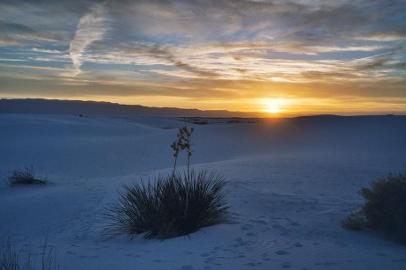
Alamogordo is this really neat little city located between Los Cruces and Roswell. Here is the History of Alamogordo according to the City of Alamogordo. Our trip information follows the history of this friendly little city.
The distinctive Southwestern city of Alamogordo dates itself to 1898 and is rooted firmly in the development and expansion of the railroad in the old West.
Alamogordo was a community planned by two entrepreneurs from New York, Charles and John Eddy. These two brothers had planned to build a railroad and the communities which would support it.
Alamogordo, one of the largest of these communities, was built on land purchased from Oliver Lee, and featured wide streets lined with Cottonwood trees - hence the name, "Alamogordo," meaning "fat cottonwood" in the Spanish language.
From 1898 to 1933, Alamogordo developed steadily with the railroad center stage. In 1905 the railroad was sold to Phelps-Dodge mining company which sold the line to Southern Pacific Railroad in 1924. By the time the U.S. entered WWII in 1941, Alamogordo was a small town of 4,000 people existing on the remnants of its economic past and a small tourist industry.
All that changed with the war. The need for gunnery ranges sparked the construction of Holloman Air Force Base on February 6, 1942. Runways were laid to provide a training area for the British Royal Air Force, and the new base, which was then named the Alamogordo Bombing and Gunnery Range - and later, the Alamogordo Army Air Field, had its beginnings.
In 1947, the range was renamed Holloman Air Force Base and over the years has been the home of many different commands and military missions.
The cultural diversity brought by international missions at Holloman, as well as the economic impact it brings with it, makes the base a valuable partner for a city which today boasts a population of more than 30,000 people as the metropolitan center of the Tularosa Basin.
We drove in from Los Cruces, spent the night there, and most of the next day doing some of the tourist attractions. After we drove around and looked at the city we ended up at the New Mexico Museum of Space History This is a very informative museum that is engaged in an ongoing program to record first person accounts of the history of space flight. They have many exhibits on the development of the space program and talk a lot about the shuttle that made an emergency landing in the area in 1982 I believe. They even had a memorial for the 7 astronauts that perished in the explosion of the challenger in 1986. It was a very interesting museum. Well worth seeing if you are in the area.
After we left the museum, we headed toward the White Sands Dunes Monument. This was one of the more unexpected, but pleasant surprises of our southern state tour. They are absolutely incredible. I’m sure it’s been said 100 times before, but it looks just like big hills of snow.
Here is a definition of the dunes according to White Sand Dunes National Monument
The Tularosa Basin in the northern Chihuahuan Desert is a mountain-ringed valley encompassing one of the world's great natural wonders -- the glistening white sands of New Mexico. Here, giant, wave-like dunes of gypsum sand move across 275 square miles of desert creating the world's largest gypsum dune field.
The brilliant white dunes are ever changing: growing, cresting, then slumping, but always advancing. Slowly but relentlessly the sand, driven by strong southwest winds, covers everything in its path. Within the extremely harsh environment of the dune field, even plants and animals adapted to desert conditions struggle to survive. Only a few species of plants grow rapidly enough to survive burial by moving dunes. However, several types of small animals have evolved a white coloration that camouflages them in the gypsum sand.
White Sands National Monument preserves a major portion of this gypsum dune field, along with the plants and animals that have successfully adapted to this constantly changing environment.
Like I said, we were pleasantly surprised. We even spent quite a while talking to one of the rangers in the visitors center. He was very informative and enjoyable to talk to. He even gave us some more ideas of places we had to stop and see on the rest of our trip. Kudos to him. I wish I could remember his name. There were a lot of people playing on toboggans and sliding down the hills. We walked around a while and our dog seemed to have a good time. We took some pictures, but I don’t know how they will come out. It was very very bright. I’m sure our dog won’t show up because she is about the same color as the sand. Lol I am very glad we stopped to check them out. Here is the White Sands National Monument
National Park website.
Back to Our Home Page
Page last updated August 2014